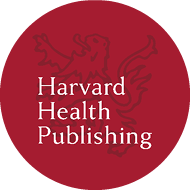Strong Partnerships Are Key to Community Health
When healthcare organizations and community groups come together around the common goal of caring for the well-being of people in a community, they can build trust and ultimately create a healthier environment for everyone.
Collaborating to Support a Historically Marginalized Population
This concept underlies a communitywide collaboration in northwest Arkansas that was formed about a decade ago by the University of Arkansas for Medical Sciences (UAMS) to address extreme health inequities among Marshallese Islanders who had relocated to this area. According to an article published in the Journal of the Arkansas Medical Society, the Marshallese population in the United States faces a host of health challenges, including high rates of diabetes, obesity, and cardiovascular disease, as well as cultural, economic, and social barriers to healthcare access. They also have a strong history of mistrust of researchers.
UAMS took a community-based participatory research (CBPR) approach, which brings academic researchers together with local residents and stakeholders (in this case, churches, community support groups, healthcare organizations, and the Consulate of the Republic of the Marshall Islands), to build trusting relationships in the community and find collaborative ways to address pressing problems.
Dialogue with Historically Marginalized Communities Shapes Interventions
The effort was initiated by UAMS researchers, who interviewed community members in their neighborhoods using open-ended questions. As described in an article published in the International Journal of Nursing and Clinical Practices, this format helped residents feel more comfortable sharing their personal and collective stories and helped build trust between the residents and researchers.
These interviews, along with data from needs assessments, school records, the Arkansas Department of Health Vital Records, other surveys and focus groups, ultimately helped to paint a clearer picture of the factors that were contributing to the community’s poor health. The research identified factors such as lack of access to nutritious food, as well as language barriers; for instance, medical terms like “diabetes” don’t have equivalent words in the Marshallese language, which makes communicating about the conditions more difficult.
Once the researchers and residents had a better sense of the obstacles impacting their community health, the residents and community stakeholders defined the priorities they wanted to address. Topping their list: reducing the risk of diabetes, increasing access to nutritious food, improving physical activity, and promoting health education. The UAMS team then worked with community members to address these problems by:
- working with local food pantries to offer more nutritious food.
- helping local churches start fruit and vegetable gardens to increase access to healthy food for congregants.
- working with physicians, community health workers and translators, and other Marshallese partners to find ways to describe diabetes and self-management in language that would be meaningful to, and resonate with, the Marshallese people.
- engaging community members to share ideas with healthcare providers and staff at local hospitals and clinics about how to further tailor their care to this particular community. For instance, noting that the Marshallese culture highly values the extended family, community members recommended addressing diabetes education to families rather than individuals.
Finally, though it was not a specific goal of the collaborative, one of the outcomes was creating connections between the community and local community-based organizations that helped reinforce the importance of hiring Marshallese community members to better serve the community’s needs.
Existing Partnerships Help Bolster Community Health During COVID-19
When COVID-19 struck, the UAMS-community collaboration already had an organization in place to reach the Marshallese people, who, according to the CDC, were disproportionately impacted by the pandemic with higher hospitalization and death rates than the rest of the U.S.
“We worked with community partners and ambassadors [such as Marshallese clinicians, nurses, social workers, and other healthcare professionals with ties to the community] to assess needs and develop tools for addressing those needs in culturally-responsive ways,” explained Ramey Moore, PhD, an assistant professor at UAMS and a medical anthropologist in UAMS’s Office of Community Health and Research.
For example, the UAMS-community collaboration set up COVID-19 testing sites (with Marshallese-speaking staff) through local community clinics and offered testing in residents’ homes since transportation was a barrier for some. In addition, when community members were forced to isolate, case workers delivered food and medication and connected people to other needed resources and support. The team also created video and written education materials — in the Marshallese language, visually representing Marshallese people, or both — to educate people about how to wear a mask properly, the risks of COVID-19 for people with chronic health conditions, and how to reduce COVID-19 spread.
Lessons Learned Can Be Broadly Adopted
Moore noted the benefits of the UAMS team being able to leverage existing relationships when COVID-19 struck. “The long-term nature of this collaborative meant that we had already built trust in the community and had well-respected ambassadors,” he said. This allowed the team to be more impactful with their efforts to address COVID-19.
Other healthcare-community partnerships can adapt and adopt the lessons learned by UAMS to improve the health of their own communities. These lessons include the importance of including the community members in the planning discussions, partnering with community stakeholders, building trust over time, and working collaboratively to design tailored interventions.
Related Stories
Subscribe
Keep up with our latest news, research, and stories.
Subscribe to financial alerts on our investors site

